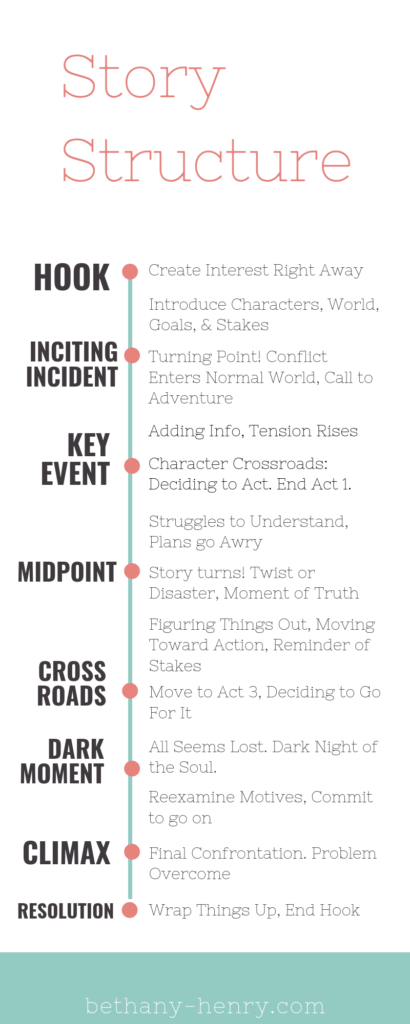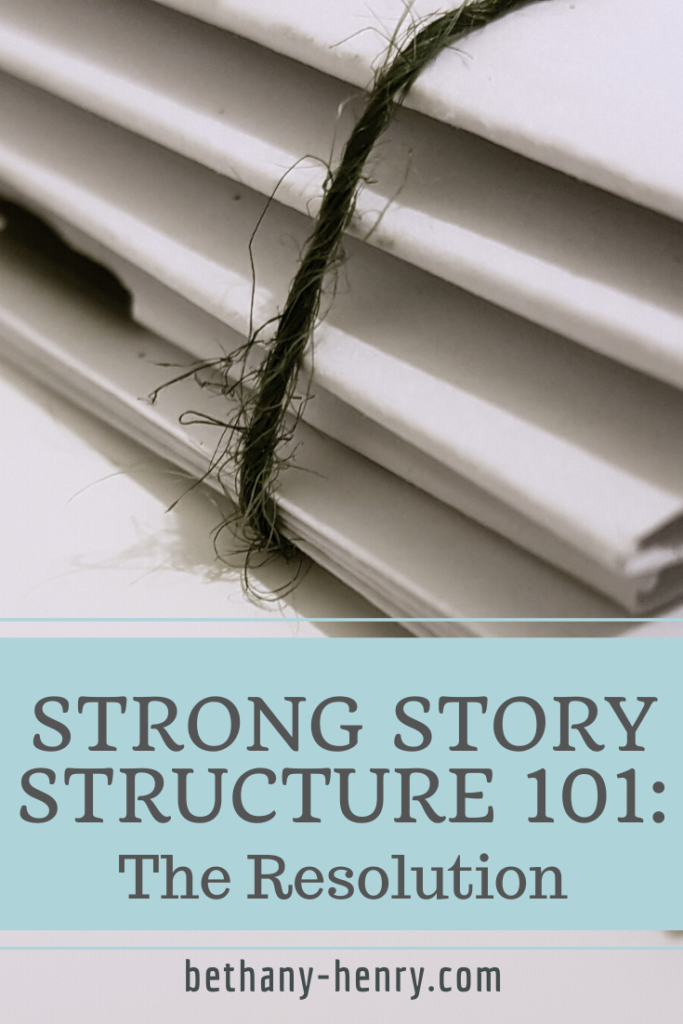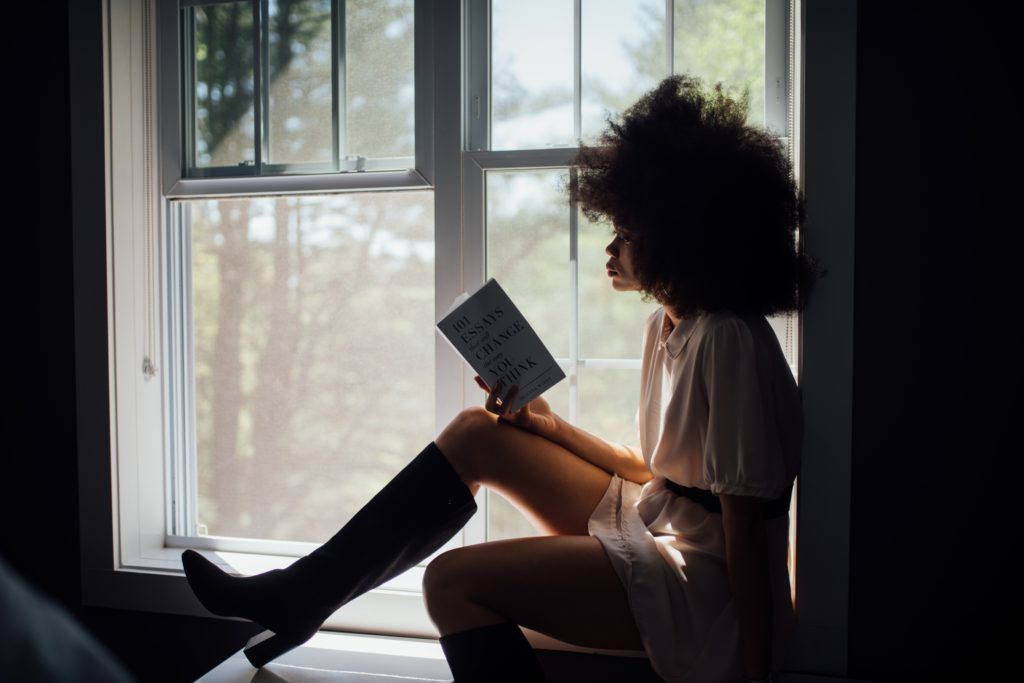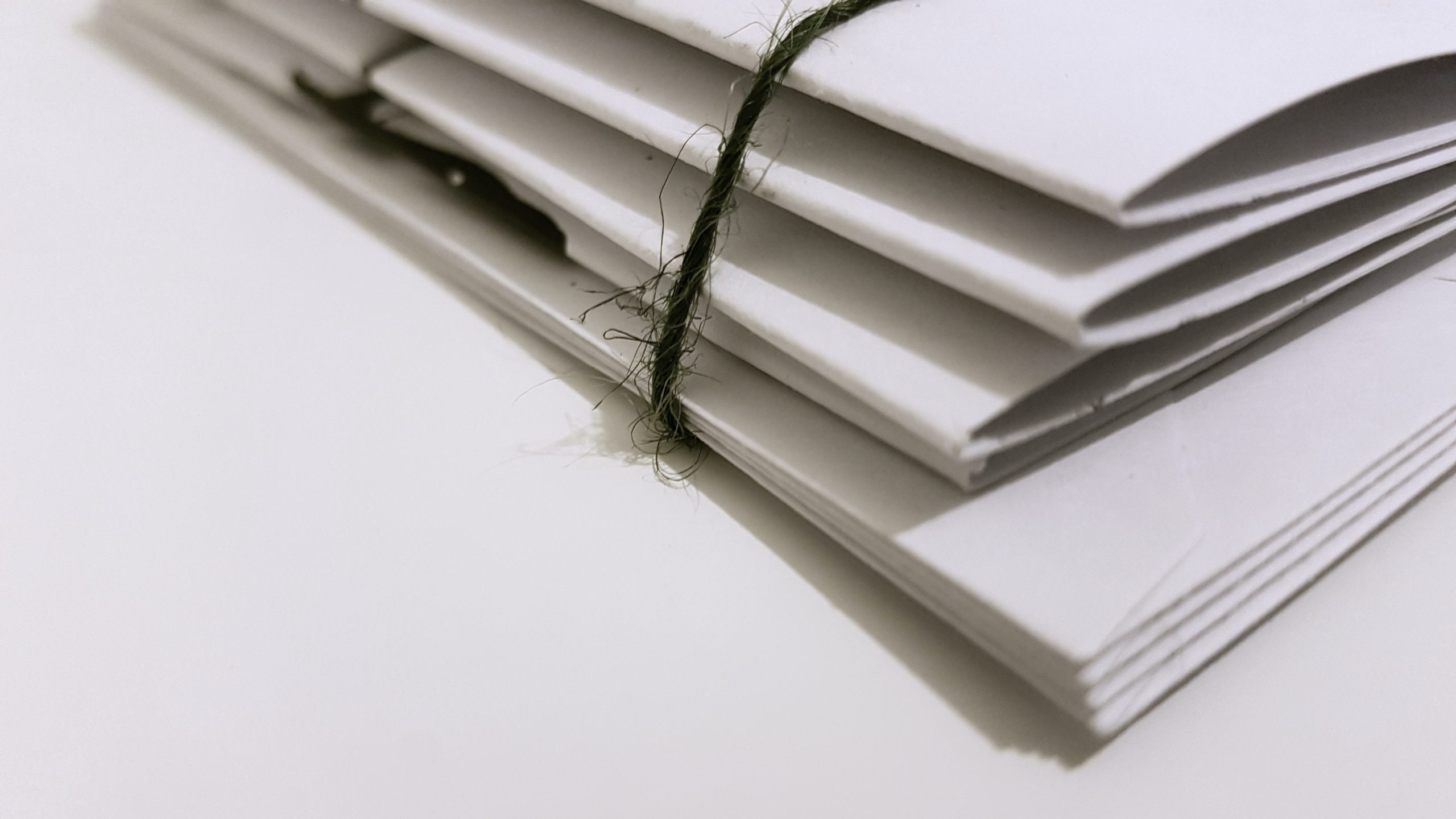Story structure is the framework that keeps our novels strong and makes them as powerful as they can be. Today we’re looking at the very last element in our stories- the resolution.
The resolution of our story is incredibly important. As Mickey Spillane put it, “Your first line sells the book. Your last line sells the next book.”
How our story ends is the impression the reader will leave with. We want our resolution to be as strong as possible.

Here’s a quick visual overview of what our strong story structure should look like. Review earlier story structure posts here!

The Resolution
The resolution of a story is after the climax has been concluded. It could be anywhere from a few paragraphs to a few chapters depending on what the story needs.
We don’t want the end of our story to be just an afterthought! It may not be the climax of the story but it’s still super important.
Components of a Strong Resolution:
Circle Back to the Start
A powerful resolution often has ties back to the beginning of the story. The hero returns home, the friends are reunited, the family recognizes what they learned, etc.
This provides symmetry, provides closure, and emphasizes what has changed throughout the course of the story.
Tie Up Loose Ends
Every single thing doesn’t need to be spelled out in the resolution, but generally there are clues finally understood and various plot pieces have now come together. This gives a sense of closure and satisfaction, a nice payoff after the tension of the climax.

We don’t need to tie up every single loose end, though- in fact sometimes it can be more powerful to leave some unanswered questions. However, we want to be careful not to leave cliffhangers that leave the reader feeling cheated. (Please don’t be that person.)
Include an End Hook
If you’re writing a series (or think you may want to in the future) the resolution can be the place for an end hook. This is an unanswered question or situation introduced at the end of the story that leads into the next story.
For example, the hero learns they have family in a far off land, a side character is revealed to be mysterious and important, or our character finds a clue that will lead them into their next adventure.
This allows the writer to include a hook at the end of the story (to keep the reader wanting to read more!) without leaving the main conflict of the story unresolved.
Even if you aren’t writing a series, an end hook can give the reader a question to be thinking about after the story ends.
Set the Tone
Think back on some of your favorite books and specifically how they ended. What did you like about them? What emotion or thought did they leave you with?
Now think about your own story: What do you want people to be thinking and feeling when they put your book down?
We want to take the time to think about the theme, purpose, and style of our book and make sure our resolution leaves the readers with that impression.

For further reading:
The Secrets of Story Structure, Pt. 11: The Resolution – Helping Writers Become Authors
Resolution- Tying Up The Ends – The Editor’s Blog
How To End Your Novel- Resolution 101 – Creative Tips For Writers
The resolution of a story is its ending. And so we’ve reached the end of our series on story structure! Thanks for sticking with it 🙂
Please feel free to contact me or comment below with any questions or if you have topics you’d like to see posts on in the future.
And as always: Happy writing and best of luck to you today! 🙂




